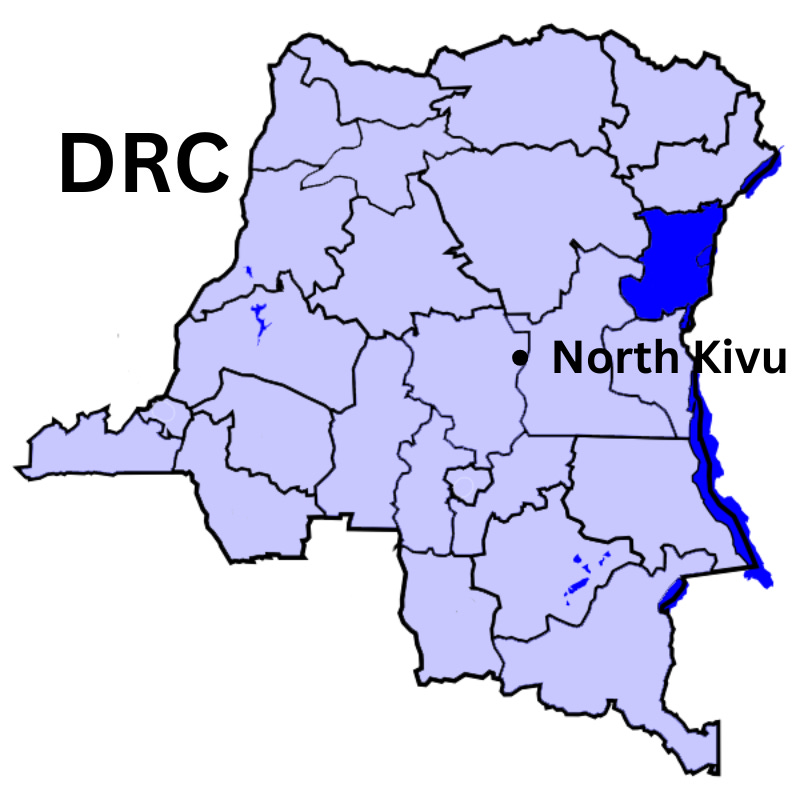In a follow-up on the anthrax outbreak in North Kivu province, Democratic Republic of the Congo (DRC), as of 26 May 2025, 24 suspected human anthrax cases had been reported, alongside the deaths of 9 goats, one cow, 60 hippopotamuses and 27 buffalo reported in four health zones in the eastern province of North Kivu.
Several agencies have contributed to the outbreak response—the national departments of health, environment, fisheries and livestock, with support from partners including the World Health Organization (WHO), UNICEF, FAO and CDC Africa, have put the “One Health” approach into practice.
One Health is a collaborative, multi-sectoral, and transdisciplinary approach that recognizes the interconnectedness of human, animal, and environmental health.
“One of the high-impact measures led by the national authorities with the support of partners was the development of the national multi-sector anthrax preparedness and response plan. Through this common approach to the response, we can ensure a comprehensive response, from prevention activities to the clinical management of patients. We are confident that this health threat will soon be over,” said Dr Aline Katerekwa Ntamushigo, Medical Supervisor at the National Programme for Emergencies and Humanitarian Action (NPEHA). “Our discussions with those involved on the ground are helping us to manage this risk effectively to protect people, animals and the environment.”
“Our support has been provided at several levels, and we are particularly keen to provide appropriate care for those affected. In most cases, the disease can be cured with antibiotics, which must be prescribed by a health professional,” explained Dr Leopold Ouedraogo, Emergency Manager in the provinces of North and South Kivu.
WHO has made more than four tons of medicines available to 12 health facilities, a large quantity of which has been handed over to the authorities in the Binza health zone in Rutshuru territory.
WHO has played a central role in cross-border coordination between the Democratic Republic of Congo and Uganda, facilitating communication and collaboration between the two countries in response to the re-emergence of anthrax in humans and animals. Surveillance has thus been strengthened, notably by activating the “One Health” unit in Rutshuru, to ensure early detection and rapid response in high-risk health zones by integrating the human, animal and environmental dimensions of health.
Anthrax is a serious infectious disease caused by a bacteria called Bacillus anthracis. Many different types of animals, as well as people, can get the disease.
In animals, signs of the illness usually appear 3 to 7 days after the spores are swallowed or inhaled. Once signs begin in animals, they usually die within two days. Infected animals may stagger, have difficulty breathing, tremble, and finally collapse and die within a few hours. Sometimes animals may have a fever and a period of excitement followed by staggering, depression, unconsciousness (lacking awareness), difficulty breathing, seizures, and death. Dark blood may ooze from the mouth, nose, and anus.
Handling or eating a dead or sick animal infected with anthrax can transmit anthrax to humans and other animals. Anthrax is not spread by sneezing or coughing. Person-to-person spread of the disease is unlikely.
Subscribe to Outbreak News TV on YouTube
In humans, symptoms of disease vary depending on how the disease was contracted, but usually occur within 7 days after exposure. The three forms of human anthrax are inhalation anthrax (caused when the spores are inhaled into the lungs), cutaneous anthrax (caused when broken skin comes into contact with infected animals or hides), and intestinal anthrax (caused when undercooked meat from an infected animal is eaten).
Initial symptoms of inhalation anthrax infection may resemble a common cold. After several days, the symptoms may progress to severe breathing problems and shock. Inhalation anthrax is usually fatal, unless the patient is treated before any symptoms occur.
The intestinal disease form of anthrax may follow the consumption of contaminated food and is characterized by an acute inflammation of the intestinal tract. Initial signs of nausea, loss of appetite, vomiting, and fever are followed by abdominal pain, vomiting of blood, and severe diarrhea. Like inhalation anthrax, the intestinal form is usually fatal.
The cutaneous form of the disease begins with itching at the site of the exposure, followed by the formation of a round, pimple-like sore. This sore will then form a blister which, after 2-6 days will become a hard, black scab (similar to the scab left after a deep burn). Untreated, between 5 and 20% of patients will die. However, with adequate antibiotic treatment very few deaths occur.





